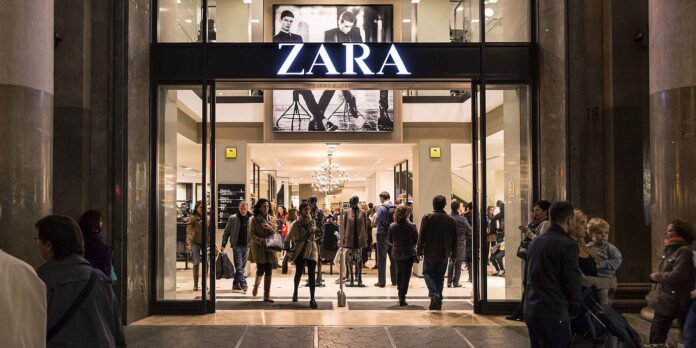Fast fashion—it’s everywhere, isn’t it? But what exactly does it mean, and why is Zara often the poster child for this phenomenon? Whether you’re a dedicated Zara shopper or just curious about the industry, understanding Zara’s unique production model can shed light on its role in fast fashion. Let’s unravel the details and see where Zara truly stands.
Understanding Zara’s Production Model
The Origins of Zara’s Production Strategy
Zara, founded in 1974 in Spain, revolutionized the fashion world with a groundbreaking business model. Its goal? To get trendy, affordable clothing into stores faster than anyone else. Unlike traditional retailers, Zara focused on speed and adaptability.
Key Features of Zara’s Supply Chain
Zara’s supply chain is nothing short of a well-oiled machine. Zara keeps things fast with in-house production and a highly responsive logistics network. Designers work closely with market teams, ensuring the latest trends hit the racks in record time.
Speed and Agility in Zara’s Processes
From Design to Store: How Fast Is Zara?
Did you know Zara can go from idea to store shelves in just two weeks? That’s lightning speed in the fashion world. This rapid turnaround gives Zara a competitive edge, allowing it to stay ahead of trends and keep customers returning for more.
Small Batch Production: Zara’s Secret Sauce
Instead of flooding the market with massive inventory, Zara uses small-batch production. This minimizes waste, keeps demand high, and creates a sense of exclusivity for shoppers.
Defining Fast Fashion
Characteristics of Fast Fashion
Fast fashion is about quick production, trendy styles, and affordable prices. It thrives on the idea of constant change, encouraging consumers to buy more and replace items frequently.
Environmental and Ethical Implications of Fast Fashion
Unfortunately, fast fashion has its downsides. From textile waste to questionable labor practices, the industry has faced intense criticism for its environmental and ethical impacts.
Is Zara the Pioneer of Fast Fashion?
A Brief History of Zara’s Influence
Zara didn’t invent fast fashion, but it certainly refined it. the benchmark for modern retailers by prioritizing speed and customer feedback.
Zara vs. Traditional Retailers
While traditional retailers might take months to launch a new collection, Zara’s agile approach keeps it ahead. This flexibility has redefined consumer expectations.
Zara’s Commitment to Sustainability
Initiatives to Reduce Environmental Impact
In recent years, Zara has taken steps toward sustainability. Its Join Life collection focuses on eco-friendly materials, and the company has pledged to use 100% sustainable fabrics by 2030.
How Zara Balances Fast Fashion and Sustainability
Is it possible to be both fast and sustainable? Zara is trying to strike that balance by improving transparency and investing in greener practices.
Ethical Concerns in Zara’s Operations
Labor Practices and Criticism
Like many in the industry, Zara has faced accusations of poor labor practices. The brand has been urged to improve working conditions and ensure fair wages across its supply chain.
Transparency in Zara’s Supply Chain
Zara has tried to improve transparency, but there’s still work. Consumers are increasingly demanding to know where and how their clothes are made.
The Customer Perspective
Why Do Consumers Love Zara?
Zara’s ability to deliver high-fashion looks at affordable prices is its biggest draw. Add the frequent stock refreshes, and you have a recipe for shopper loyalty.
The Psychological Appeal of Newness and Trends
Humans crave novelty—it’s just how we’re wired. Zara taps into this by constantly introducing fresh designs, keeping customers excited.
Comparing Zara to Its Competitors
Zara vs. H&M
Both brands are fast fashion giants, but Zara’s speed and exclusivity give it an edge over H&M’s broader appeal.
Zara vs. Shein: Fast Fashion Evolved
Shein has taken fast fashion to a new level with ultra-low prices and an overwhelming selection. Zara, by contrast, focuses on quality and trendsetting designs.
Challenges Zara Faces in a Changing Market
The Push for Sustainability in Fashion
As consumer awareness grows, Zara must adapt. The brand’s commitment to sustainability will be crucial for its future success.
Rising Competition in the Industry
With new players like Shein and the rise of slow fashion, Zara must stay innovative to remain a leader.
Is Zara Fast Fashion? A Final Verdict
Analyzing Zara’s Model Through the Fast Fashion Lens
Zara undeniably fits many fast fashion criteria—speed, affordability, and trend-focused designs. However, its efforts to reduce environmental impact set it apart from some competitors.
Balancing Speed, Affordability, and Responsibility
Zara walks a fine line between fast fashion and sustainability. While it has made progress, the journey is far from over.
Conclusion
Zara has undeniably reshaped the fashion industry, blending speed and style. At the same time, it remains a cornerstone of fast fashion; its strides toward sustainability hint at a promising future. Whether you love or critique it, Zara’s influence on retail stays here.
FAQs
What makes Zara different from other fast fashion brands?
Zara’s speed exclusivity and innovative supply chain model set it apart.
How does Zara’s small-batch production impact its popularity?
Small batches create scarcity, encouraging shoppers to buy quickly before items sell out.
Is Zara making real progress in sustainability?
Yes, Zara has committed to sustainable fabrics and eco-friendly practices, though challenges remain.
Why is fast fashion criticized so heavily?
Fast fashion is criticized for contributing to waste, pollution, and poor labor practices.
How can consumers make more ethical fashion choices?
Opt for sustainable brands, buy second-hand, or choose longer-quality pieces.
For more information, visit my blog:-zisbrand.com




